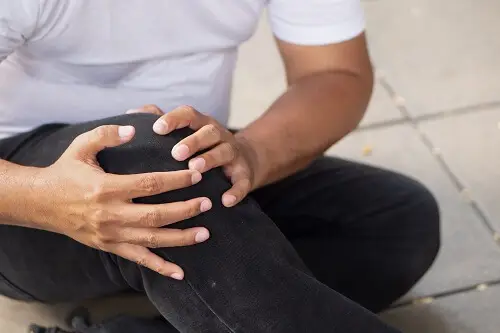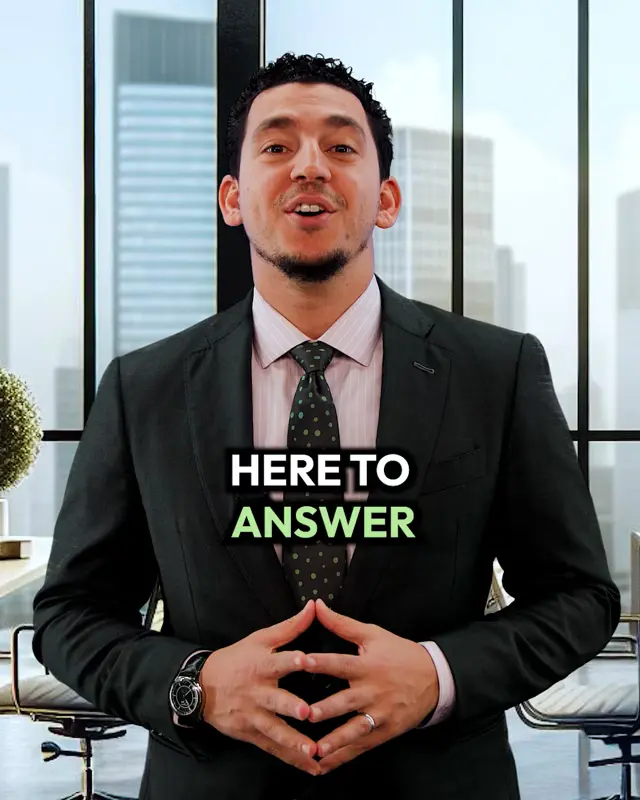We have all slipped and fallen at different points in our lives. The concerning thing about slips, trips, and falls is that these types of injuries can happen anyway, at any time. Though there are precautions that can be taken to minimize the possibility of these injuries from occurring, there is no way to eradicate the risk completely. This is especially true when you are not warned and cannot predict a slipping hazard on someone else’s property.
If you or a loved one has been injured in a slip and fall accident, reach out to our CEO Lawyer Personal Injury Law Firm in Georgia. When the chips are down, you will want a driven and inspired attorney like Ali Awad in your corner. He and the CEO Lawyers team will fight aggressively to find the evidence and legal reasoning needed to give your claim a high chance of success.
Located in Atlanta, our team of injury and accident attorneys can quickly come to you when you need it most. Contact us today in order to schedule your free, no-obligation with one of our passionate attorneys who wants to help you have an opportunity to get the fair compensation you deserve for your injury.
As always, our services to you have no upfront cost, and we only collect payment once we have recovered money for you. Get in touch with us soon so we can start fighting for you! Contact us online or call (470) 323-8779.
Championing Slip and Fall Victims in the Peach State
Whether you’re at Truist Park watching the Braves bring in another victory or on a shopping trip at Atlantic Station, you are always at risk for a slip and fall injury. No matter if you are in a business, a store, walking on a sidewalk, or even in a private residence, you could sustain an injury from a slip and fall accident.
Sometimes a slip and fall accident is just that: an accident. But suppose it is determined that the accident was caused due to neglectful behavior by the property owner or other responsible parties. In that case, you may be able to hold them liable for the fall.
Accidents like these can have an extreme effect on your life — hospital and physical therapy bills, lost wages, and all the pain and suffering that can come with it. To help give you the chance to receive the full compensation required for you to recover from your accident, find an experienced Georgia slip and fall accident attorney who will be by your side every step of the way.
From advice on where to start to receive a check from the insurance company after your case has been settled, a lawyer from CEO Lawyer Personal Injury Law Firm in Georgia will be there for you.
What Are Common Causes of Slip and Fall Accidents?
Slip and fall accidents can occur pretty much anywhere, any time. However, there are a few places and situations where slips and trips are more likely to occur:
- Slippery, Wet Surfaces — Floors can become slippery when a liquid is spilled on them or after the spill has been mopped up. Like rain or mud tracked into an area by shoes or boots, other circumstances can also make surfaces become slippery. Some surfaces are inherently slippery, like natural stone or glass. Ice can also present a dangerous slip hazard.
- Cluttered Areas — Any area that does not have a cleared walking path can become a tripping hazard, especially in hallways and aisles.
- Uneven Surfaces — Uneven sidewalks, broken pavement, potholes, and even carpeting issues, such as bunching or lifting, can all create sudden and unexpected tripping hazards.
- Poorly -Lit Areas — When you can’t see where you’re going, it’s difficult to keep yourself safe from tripping. If possible, it is a good idea to avoid poorly lit areas or bring your own lighting source if you know you’ll be in a space with dim light.
- Failure to Maintain Premises — Stairs, ramps, and other structural components in poor repair can all become tripping and falling hazards.
- Failure to Warn — When tripping hazards can’t easily be seen and understood, they should be clearly marked. For example, businesses open to the public should warn visitors about small step-ups that are dark or otherwise hard to see.
These hazards can be found in many places, but you are most likely to find them in the following:
- Grocery or retail stores
- Sidewalks
- Parking lots
- Restaurants
- Amusement Parks and Theme parks
- Public Parks
- Stadiums
- Theaters
While it doesn’t make sense to avoid all these places entirely because of the possibility of a trip and fall injury, it is important to remain vigilant of your surroundings and to avoid high-risk areas. For example, exercise caution around a freshly mopped floor or a section of a store that’s being remodeled. However, we can’t predict every hazard, especially when we are not properly warned. We are also not responsible for maintaining a property in such a way as to prevent slip and fall hazards.
What Injuries Typically Occur from Trip and Fall Accidents?
While most falls do not cause any lasting injury, the CDC estimates that about 20% of falls result in moderate to severe injuries. Fall injuries are particularly common — and concerning — for individuals 65 and older.
Some of the injuries most commonly seen in trip, slip, and fall accidents are:
- Bone Fractures
- Traumatic Brain Injuries (TBIs)
- Soft Tissue Injuries
- Back and Spinal Cord Injuries
- Neck and Shoulder Injuries
- Sprained Wrists and Ankles
- Cuts and Abrasions
If you have slipped, tripped, or fallen, it is important to see a doctor, even if you feel fine afterward. This precaution is especially important in an accident where you hit your head.
Even if you don’t think you’re injured, it can take time for symptoms to present, and a doctor will need to run some diagnostic tests to diagnose your injuries.
If you think your accident was caused due to the negligence of a property owner or someone else, it is important that you get your injuries documented by a medical professional soon after your incident. This documentation can help you prove the injuries were caused by the fall, and it also provides proof of the seriousness of your injuries immediately after the accident.
Will The Insurance Company Help Me?
If you’ve been involved in an accident, it seems like the insurance company covering the property is there in order to help you out. They have caring call center representatives who are eager to help answer any questions you have; they have forms that are quick and convenient to fill out when trying to report a claim — they really make it seem like they are on your side.
However, it is important to note that insurance companies really only have one main interest at heart: making money. Though they may advertise being a good friend or neighbor, they are more interested in is having a good profit margin.
If you’ve been involved in a serious accident, it is likely that you have new medical bills. It’s possible that you had a long hospital stay, or you may be required to do physical therapy or see new doctors regularly for the next few months. All of these appointments, or your injury itself, might keep you out of work. And, of course, your regular monthly expenses haven’t gone away, either.
The insurance companies know that this is a stressful time for you, and will try to offer you a fast settlement in the hopes that you’ll take their first, typically low, offer.
This is where an experienced trip and fall accident attorney can help you out. At the CEO Lawyer Personal Injury Law Firm, we know how insurance companies try to operate. We can help fight for you to get more than the minimal amount the company wants to pay. We are concerned with making sure that you’re able to return to the life you knew before the accident, and we want to help get you the financial compensation you need to get there.
Your Injury Case Can Mean Money For:
- Past medical bills
- Future medical bills and rehab
- Lost wages
- Pain and suffering
- Loss of consortium
- Travel expenses
Are There Other Benefits to Hiring a Slip and Fall Accident Attorney?
At the CEO Lawyer Personal Injury Law Firm, we know that fighting for you against the insurance companies is one of the biggest things that we can do to ensure you get your life back. However, we like to go above and beyond and offer additional services to help our clients get back on their feet. We would be happy to:
- Locate a doctor for you who will not charge you out of pocket
- Provide you access to pre-settlement loans
- Work to ensure you receive the highest possible settlement, which includes gathering evidence, such as police reports and accident scene photos, doctor’s notes, witness statements, and anything else we need to support your claim.
Hire Experienced Slip and Fall Attorneys in Georgia
If you or a loved one has been involved in a slip and fall accident in Georgia, look no further than the CEO Lawyer Personal Injury Law Firm. We have the experience and dedication you’re looking for in a Georgia law firm. We will fight for you against insurance companies. And if they refuse to pay their fair share, we aren’t afraid to pursue the case further. We can file a lawsuit or take them to court — whatever it takes to help you recover the money you need.
If you’ve recently been involved in an accident, you need to take this time to rest and heal. Hiring an experienced Georgia injury attorney can allow you to do just that while also giving you the peace of mind that someone is on your side and fighting to get you the compensation you yearn for to resume your life.
Call (470) 323-8779 or contact us online to schedule your completely free, no-obligation consultation with one of our trusted attorneys. We will listen to the details of your case and provide you with personalized feedback about how to effectively go about pursuing the compensation you deserve. Don’t delay — contact us now so we can start fighting for you!




